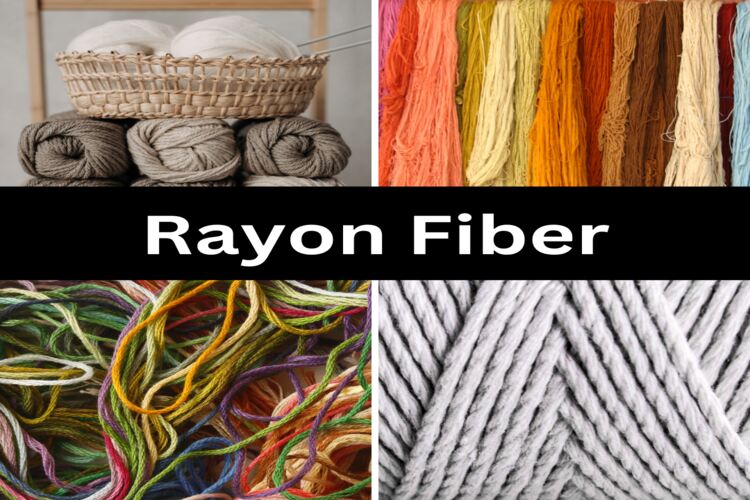What is Rayon Fiber?
Rayon fiber is a type of textile fiber made from processed cellulose fibers, often from wood pulp. Even though it starts with natural materials, chemicals are needed in its production.
History of Rayon Fiber
In the 1860s, the silk fiber industry in France was in trouble, leading to a demand for regenerated fiber. Count Hilaire de Chardonnet addressed this issue by inventing artificial silk from cellulosic material and obtaining a patent in 1885. The term “rayon” was actually coined by the Federal Trade Commission (FTC), and by 1925, rayon production was in full swing. Rayon fiber is now a very popular fiber because it closely resembles natural materials like cotton and silk. People value rayon for its breathability and its capacity to absorb moisture.
Properties of Rayon Fiber
- Rayon fiber comes from natural cellulose sources.
- It has the ability to mimic the tactile sensations and fabric textures of silk, wool, cotton, and linen.
- Traditional viscose rayons are less durable and tend to lose their appearance, especially when wet.
- The flexibility of lyocell rayon fabric affects its ability to resist excessive shrinking or looseness in clothing.
- These fibers easily take on a wide range of dye colors.
- Rayon fibers vary in denier, with measurements spanning from 1.5 to 15.
- Rayon has the least elastic recovery of any fiber.
- Rayon fiber naturally has a shiny appearance.
- Rayon fiber is valued for its softness, comfort, and versatility.
- When wet, rayon temporarily weakens.
- Rayon fiber are extremely soft, smooth, cool, and very absorbent, though they may not always provide warmth.
Advantages of Rayon Fiber
- It’s budget-friendly.
- It breathes easily, similar to cotton fiber.
- It mixes well with different fibers, especially woven fabrics.
- Many appreciate its silk-like texture.
- It’s a great option for people who want a luxurious appearance without spending too much.
- It can be dyed with ease, resulting in vivid, stunning colors.
- It gracefully hangs and drapes well.
Disadvantages of Rayon Fiber
- It readily absorbs moisture, body oils, and water, potentially causing stains.
- It tends to stretch and sag without recovering well.
- Its production harms the environment, making it unsustainable despite coming from wood.
- Treating stains may lead to permanent marks.
- The fabric is fragile, especially when wet.
- Dry cleaning is the recommended cleaning method.
- It’s not suitable for home furnishings due to its tendency to stretch.
Use of Rayon
Breezy Clothing: Rayon’s natural drape is perfect for creating light and breathable garments like loose tops and bottoms.
Sporty Styles: Rayon’s moisture-wicking and breathability properties make it a popular option for athletic wear, ensuring you remain cool and dry during exercise.
Chic Outfits: Rayon’s smooth, shiny texture, cost-effectiveness, and low maintenance have made it a top choice to replace natural silk in various clothing items, from blouses to lingerie.
You may also like:
- Nylon Fiber: Properties, Advantages and Disadvantages
- Kapok Fiber: Properties, Structure and Production Process.
- What is Linen Fiber? Properties, Structure, and How It Made?
- What is Jute Fiber? Properties, Advantages and Disadvantages.
- What is Hemp Fiber? Properties, Advantages and Disadvantages.
- What is Ramie Fiber? Properties, Advantages and Disadvantages.
- What is Sisal Fiber? Properties, Structure, and How It Made?
- Pina Fiber: History, Properties, Production Process
- Coir Fiber: Properties, Production Process and Advantages
- Wool Fiber: History, Properties, Production Process
- Acrylic Fiber: History, Properties, Advantages and Disadvantages
- What is Textile? Definition and Meaning
- Olefin Fiber: History, Properties, Advantages and Disadvantages
Share this Article!

